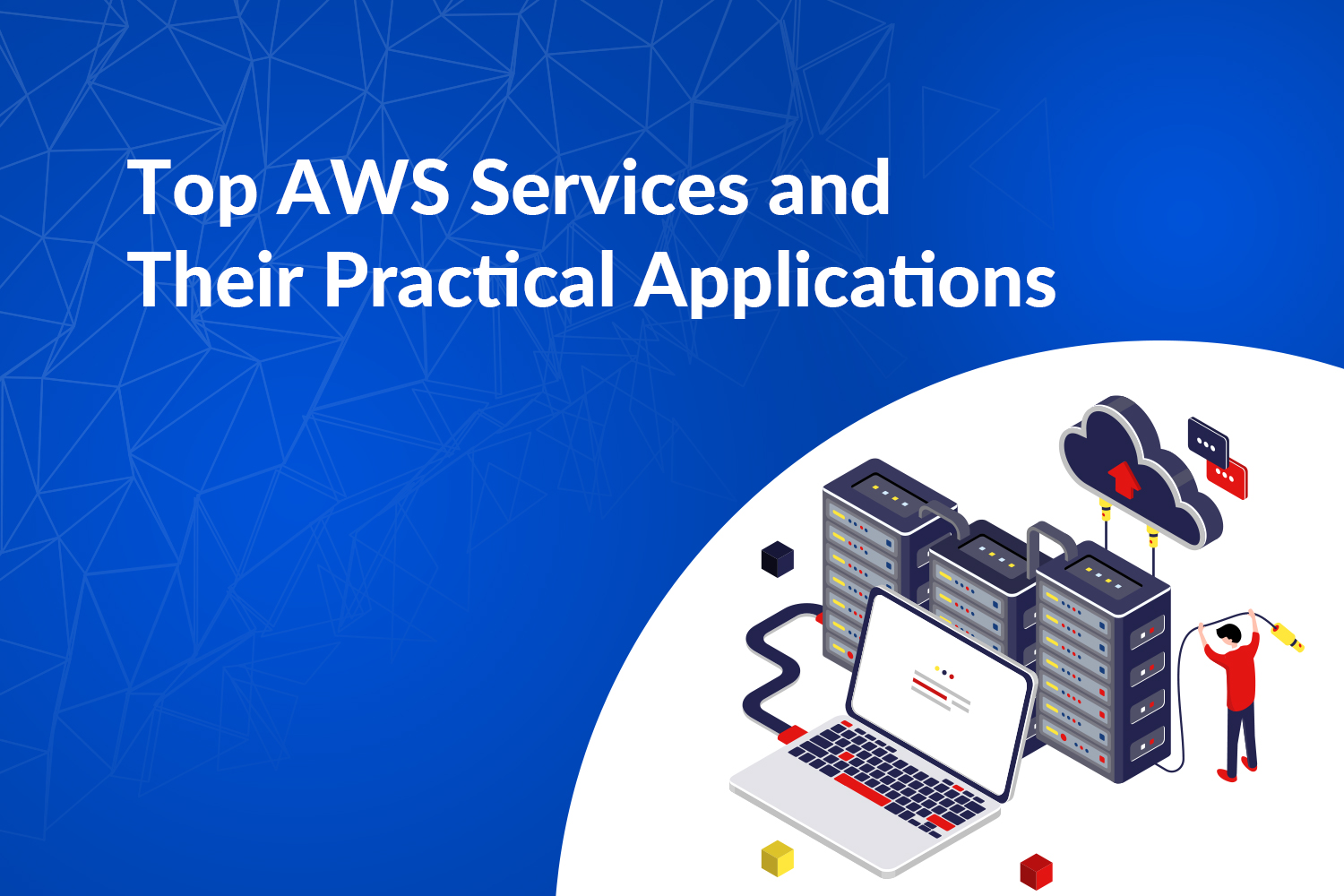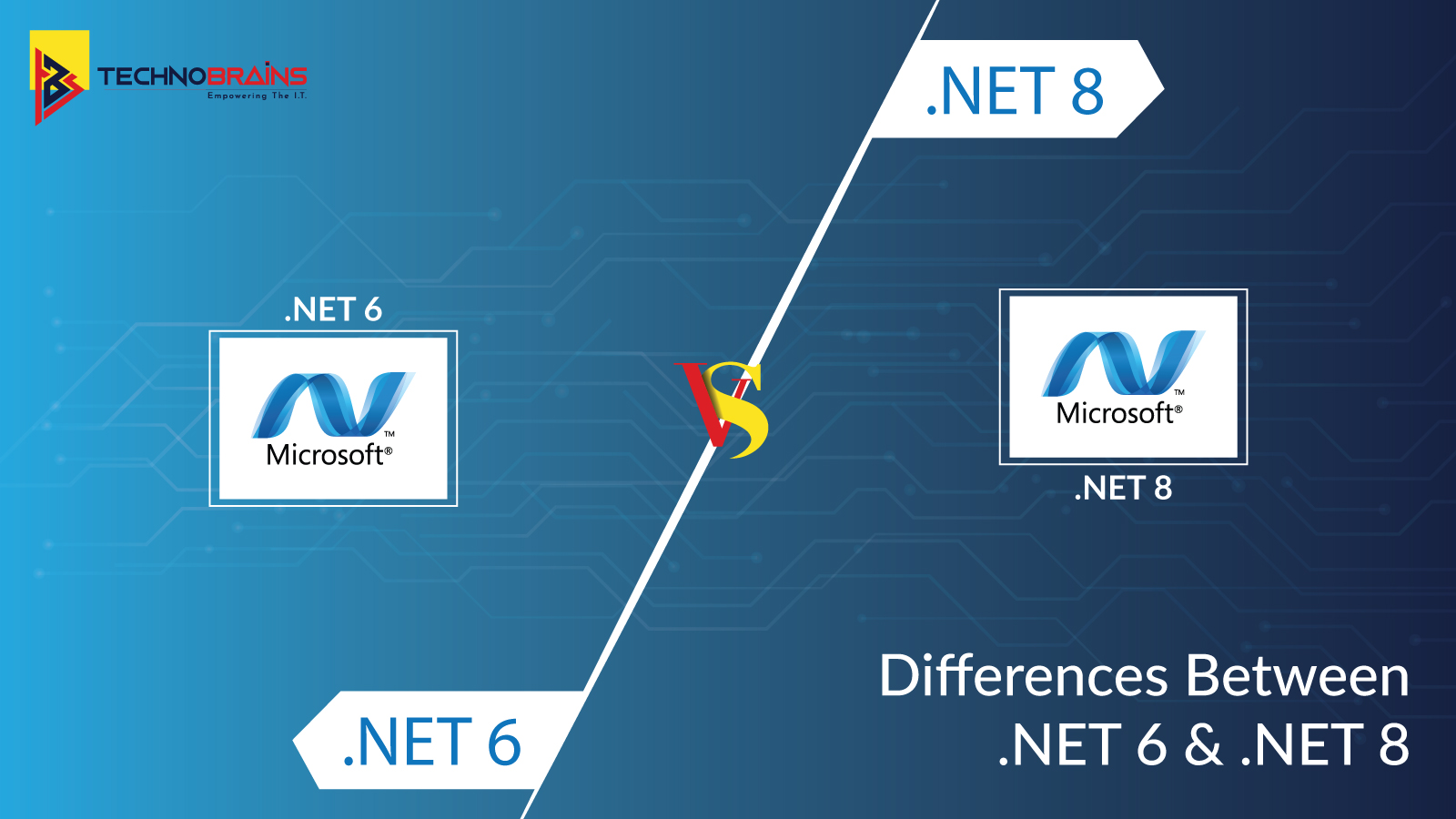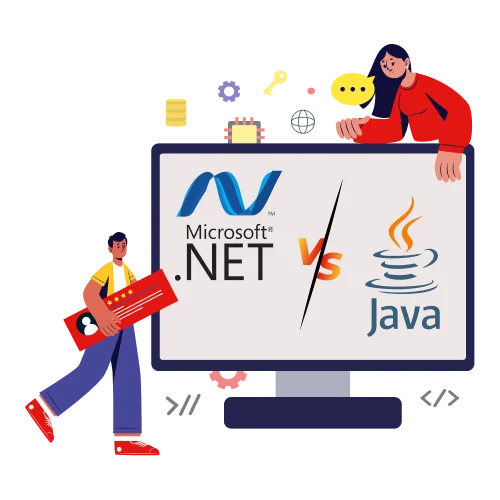Cloud computing has revolutionized the world of computing thanks to Amazon Web Services! Here’s how! Amazon Web Services, also called AWS, is a cloud computing service provided by Amazon that provides a variety of services and building blocks for implementing all kinds of cloud applications. Each of the AWS services works in conjunction with the other to deliver highly sophisticated, scalable applications.
What are Amazon Web Services Exactly?
Amazon Web Services consists of a number of products and services related to cloud computing. Cloud infrastructure, storage, network, email, mobile development, and security services are some of the highly profitable services from Amazon. As a cloud service provider, AWS is, composed of three main components: EC2, Amazon’s virtual machine service, Glacier, a low-cost storage service, and S3.
As one of the world’s largest and most established IT companies, AWS is outpacing its competition. According to one independent analyst, as of the first quarter of 2021, AWS holds over a third of the market with 32.4%, followed by Azure at 20%, and Google Cloud at 9%.
AWS’s servers are located in 81 availability zones. In addition to dividing up service areas so users can, restrict geographically which services they can access (if so desired), data centers are, also divided to provide a greater level of security by diversifying where data is located. In all, Amazon Web Services serves customers in 245 countries.
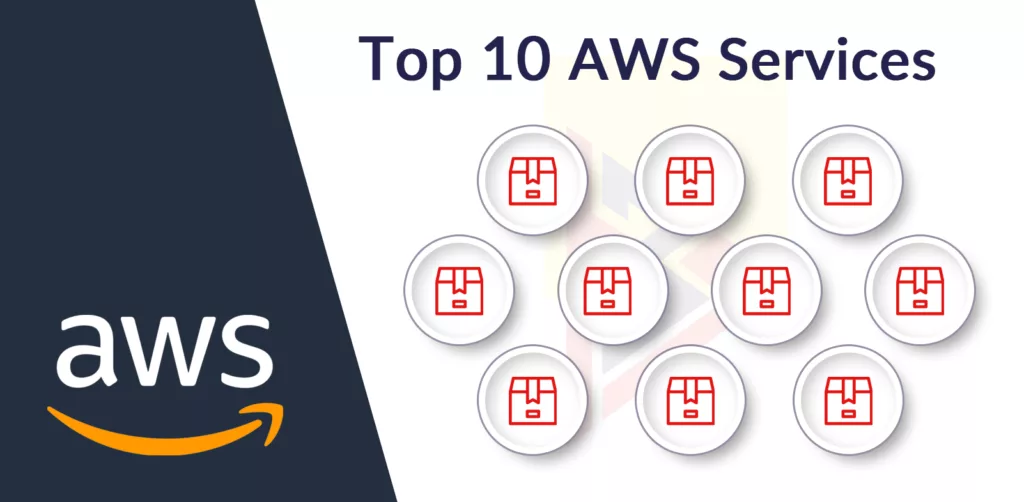
Why Amazon Web Services is So Popular?
Cost Savings
The company’s CEO Jeff Bezos has compared it to the early 1900s utility companies. It was common for factories that needed electricity to build their own power plants 100 years ago, but once factories were able to buy electricity from a public utility, the need for expensive private power plants decreased. Companies are being, encouraged to shift from physical computing equipment to cloud computing by Amazon Web Services (AWS).
It was traditional for companies to build and maintain large storage facilities to store large amounts of data. It could be pricey to store on a cloud, even though the company could “grow” into that amount of storage space in the future. A business that does, not grow or is built with too little storage can face, disastrous outcomes.
To learn more about how disaster recovery and backup strategies work in cloud environments, check out our comprehensive guide to backup and recovery solutions.
Powerful computers follow the same principle. Historically, businesses that experience surge traffic would have to purchase a lot of power to survive during peak hours. Tax accountants, for example, are not in demand during May, so their computer power is, unused.
Companies only pay for the resources they use with AWS. Storage systems do not have an upfront cost and there is no need to estimate usage. AWS customers use what they need, and their costs scale automatically.
Scalable and Adaptable
Considering that AWS’s cost is based on a customer’s usage, start-ups, and small businesses will appreciate the advantages of using Amazon for their computing needs. AWS provides all the tools needed for businesses to start up with the cloud as it provides all the stuff they need. Existing companies can seamlessly migrate their infrastructure to Amazon Web Services at a low cost with Amazon’s low-cost migration service.
AWS helps companies expand as they grow. Customers will never have to spend time wondering whether they need to reexamine their computing usage because the business model allows for flexible usage. Almost all computing needs can be, fulfilled by simply “setting and forgetting”, aside from budgetary constraints.
Security and Reliability
A company that hosts its own website or storage would undoubtedly be less secure than a company that uses Amazon Web Services. Data centers operated by Amazon Web Services are, constantly monitored and strictly maintained. Datacenter diversification prevents permanent data loss caused by a disaster in one region.
As a Netflix customer, imagine if all of Netflix’s personnel files, content, and backed-up data were to be, centralized on-site. The result would be chaos.
This is incorrect, as data should not be, stored in a location where it can easily be, accessed by hundreds of people. As much as possible, Amazon Web Services places its data centers in unexpected places and allows only essential access.
The data centers and the data contained therein are, protected from intrusions, and with Amazon’s expertise in the cloud, malfunctions are, quickly identified and remedied. An IT specialist working from a large office can’t offer the same level of service to a small company that relies on a single employee for computing needs.

Criticism of Amazon Web Services
Amazon Web Services is unquestionably successful, but critics say the company engages in anticompetitive behavior in an attempt to abuse its dominant position. Critics of Amazon claim the company is stealing and incorporating software that was originally developed by other tech companies.
Amazon was sued by one of these companies, Elastic, for allegedly violating trademark laws. In a statement released by the company, it stated that Amazon’s policies were inconsistent with the values and norms that are particularly important to the open-source community. As of August 2021, the verdict is still pending.
Read About .NET 6 here, in our blog.
Why use Amazon Web Services?
The first cloud service was launched by Amazon’s EC2 in 2008, the preeminent cloud vendor. There are more features and solutions provided by AWS than by any other provider. Users have access to a central management console, where they can conduct operations in real-time.
AWS is designed for those new to using software development utilities and is tailored to make it easy to use.
Applications can be deployed in minutes without having to provision servers or write extra code with AWS.
The vast network of data centers managed by Amazon ensures low latency worldwide. You can replicate AWS services regionally to avoid downtime and recover quickly.
As far as AWS services go, there is no doubt that it offers quite a few. The choice can become overwhelming at times. Networking, IDP compliance, content delivery, migration, storage, databases, computer management tools, and security are among the categories of services that are categorized. While there was a substantial increase in usage this year, it is difficult to identify which services were most popular.
These are the top 10 most used AWS services for ensuring a standout infrastructure if you want to migrate applications or your database to the AWS cloud.
The top 10 Amazon Web Services and How We Use them:-
1. Elastic Compute Cloud (EC2):
An EC2 instance is basically a server with an operating system that can be used to run your applications on the internet, just like your application runs on your laptop during development.
Each EC2 machine is configured differently in terms of CPU, Memory, RAM, etc. In a nutshell, they’re classified according to their processing power, memory optimization, storage optimization, etc. Memory-optimized instances, for example, fall under the “m” family. Compute-optimized instances, meanwhile, are in the “c” family.
This type of instance can be used to run backend servers, background scripts, databases, or front-end applications.
Elastic Container Service enables us to deploy Docker containers to take advantage of the APIs offered by microservices. The Hosts feature also allows you to use EC2 instances as jump box hosts to run ad-hoc scripts for purposes like caching Redis data, backfilling data, or connecting to private databases.
Read here, if it will be beneficial for you to migrate to .NET 5.

2. Relational Database Service (RDS):
Relational database services are distributed relational databases. There are several database instances available from Amazon RDS, with performance, memory, and I/O optimized offerings. Choose from Amazon Aurora, PostgreSQL, MySQL, MariaDB, Oracle Database, and SQL Server, among others.
Using Amazon RDS, you can create copies of your data in the same region or in another. Adding multiple copies of your data to an existing DB instance will increase aggregate read performance. These replicas can be promoted for standalone DB instances as needed.
Among our main databases, PostgreSQL is used, while RedShift is used for analytics and reporting. Each team has its own database which stores its own products’ data and a single database for storing the common data.
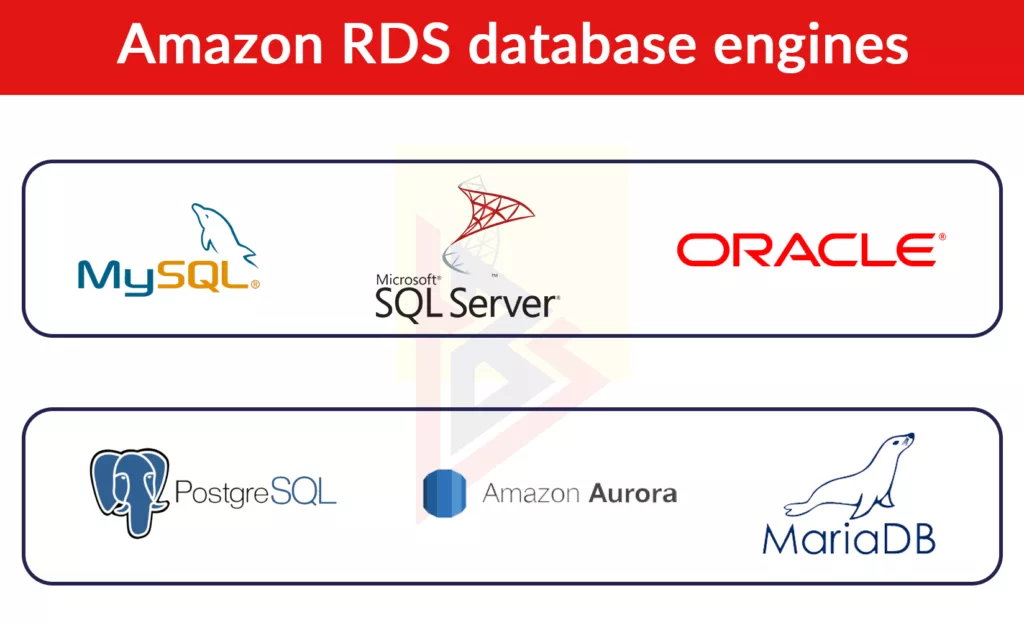
3. Elastic Container Service (ECS):
It’s a fully managed service that orchestrates containers on Amazon Web Services.
ECS has been the foundation for key Amazon services including Route53, Secrets Manager, IAM, and Amazon CloudWatch providing a familiar environment to deploy and manage containers on AWS.
Depending on the workload, you can automatically scale up or down your ECS clusters. You can increase the number of cluster instances or service tasks when the traffic to your services is high. If the traffic decreases, you can decrease the number of tasks. You can, for example, limit the number of containers for a particular service to 4. It is possible to set up auto-scaling to add 2 more containers if the CPU percentage goes over 80%. Remove 2 containers if the CPU percentage falls below 40%.
Each team has its own ECS cluster and microservice containers within each cluster within our organization. Each service can be scaled independently based on its traffic.
Read more about building & hosting WordPress sites on AWS.
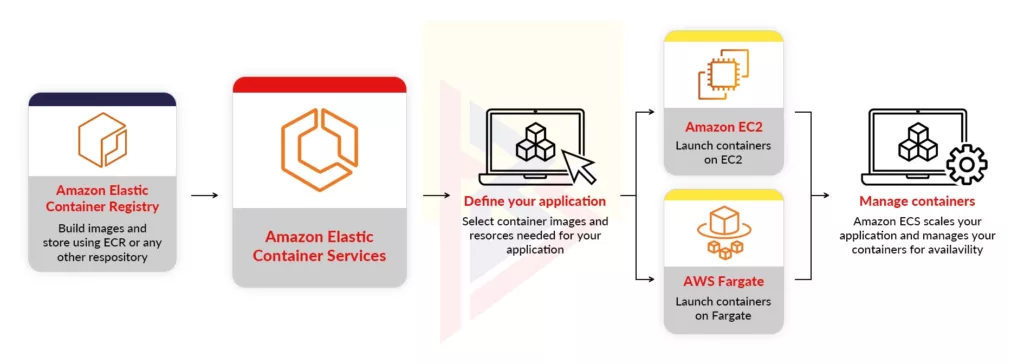
4. ElastiCache:
Amazon ElastiCache is an in-memory data store and cache that provides high throughput and low latency to support applications that require sub-millisecond response times.
The Amazon ElastiCache is popular for applications like real-time caching, session stores, game servers, geospatial services, real-time analytics, and queueing.
You can use Amazon ElastiCache for your most demanding applications that require sub-millisecond response times since it manages both Redis and Memcached.
Likewise, EC2 offers multiple instance types, including t3, r5, and m5. If you are constrained by budget and computing requirements, you can choose the one you need.
If you have a service that receives around 6000 requests per second, and you need low API response times from this service. Then chose ElastiCache for the microservice’s primary data source. Requests can be served within a few milliseconds with no issues.
Furthermore, Redis is also used as a write-through and write-back cache and a place to store some data that can be accessed quickly in many other critical services.
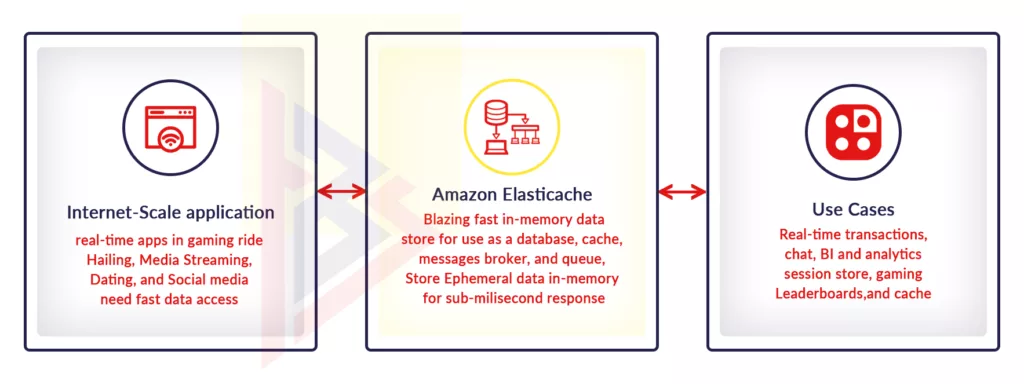
5. Simple Storage Service (S3):
This object storage service offers scalable, secure, and high-performing low-cost object storage.
Many use cases are possible for S3, such as websites, mobile apps, enterprise applications, backup and restore, etc.
Data is, stored for millions of applications worldwide using Amazon S3, which offers 99.99999999% (10 9’s) durability.
Use S3 for a number of different purposes, including storing call recordings, invoice pdfs, payment receipts, and archiving older service logs. Also, use Amazon Athena to query S3 data for analytics. Lambda events are, also triggered by it.
Read about the Front End Development Tools.
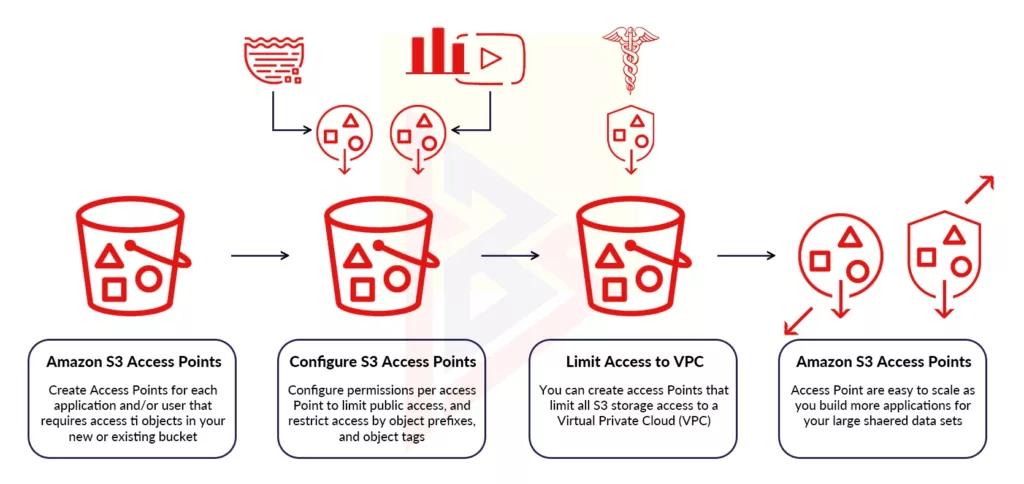
6. Simple Queuing Service (SQS):
Message Queuing Service is, a fully integrated messaging service that is, used for decoupling and scaling microservices independently. By using SQS, you can send, store, and receive messages between various components in any amount. Having a distributed application that is scalable is a great benefit.
SQS offers two types of message queues:
- Standard queues: These types of queues are, best suited to applications with heavy throughput requirements, no message ordering, and at least one message delivery.
- FIFO queues: FIFO queueing systems should be, used when messages must be, handled in the order they are, sent so that they are, always processed once in the same order.
Messaging retention and default visibility timeout are two important properties of SQS queues.
Message Retention Period:
Messages pushed into the queue are, retained for this amount of time. The messages in the queue will be, deleted after 3 days, for example, if this value is, set to 3 days.
Default Visibility Timeout:
Default visibility timeout governs the period after any worker/application has picked up a message before it is, made visible to other workers again.
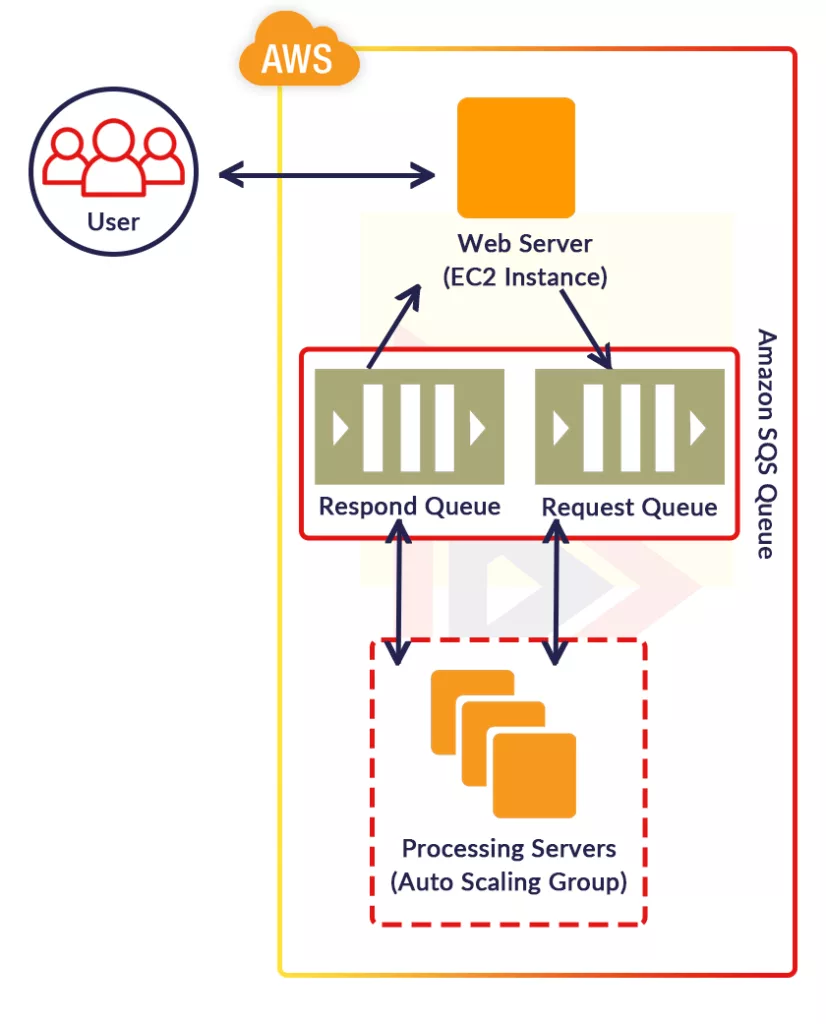
7. Load Balancer:
Load balancers are a critical component of distributed systems that sit between the client and the server, accept incoming requests, and route them across a cluster of servers in order to handle the load.
Monitors the health of all servers connected to the network. The server will not accept incoming requests if it is unhealthy.
Benefits of a load balancer:
- Users’ experience is faster
- Throughput is high and there is less downtime. LB routes traffic to servers that are up if one is down.
- It reduces the load on individual servers and eliminates the possibility of a single point of failure.
- Responds faster
- Increases the overall availability of the system
Routing algorithms used:
- Least Connection Method
- Least Bandwidth Method
- Round Robin Method
- Least Response Time Method
- Weighted Round Robin Method
- IP Hash Method
For web-facing applications and internal microservices, use both external and internal load balancers.
Read here the Oracle Cloud vs AWS, in our blog.

8. Route 53:
AWS’ Route53 service features high availability and scalability. For those who are unaware of what a DNS service is, it’s basically a service used to link users to Internet applications by translating names like www.example.com into numeral IP addresses.
With Route53, you can route traffic based on a variety of configuration options, such as Simple Routing, Weighted Round Robin, Latency Routing, Failover Routing, Multi Answer Routing, Geolocation, etc. Create fault-tolerant systems by combining these components in different ways.
According to the way you plan to route your website based on DNS queries, there are various types of DNS records available:
- A record type
- AAAA record type
- CAA record type
- CNAME record type
- MX record type
- NAPTR record type
- NS record type
- PTR record type
- SOA record type
- SPF record type
- SRV record type
- TXT record type
You can use Route53 in a variety of ways within your organization and it will help you:
- Using CNAME records, forward traffic from host endpoints to a load balancer
- A host endpoint can be connected to a multi-region service using Failover A records
- A load balancer will be selected based on the weight of the traffic. We have used Opsworks to run our microservices in the past. To migrate traffic from the old service to the new service, we needed to use weight-based routing.
- You can create aliases, etc., using A-type records.
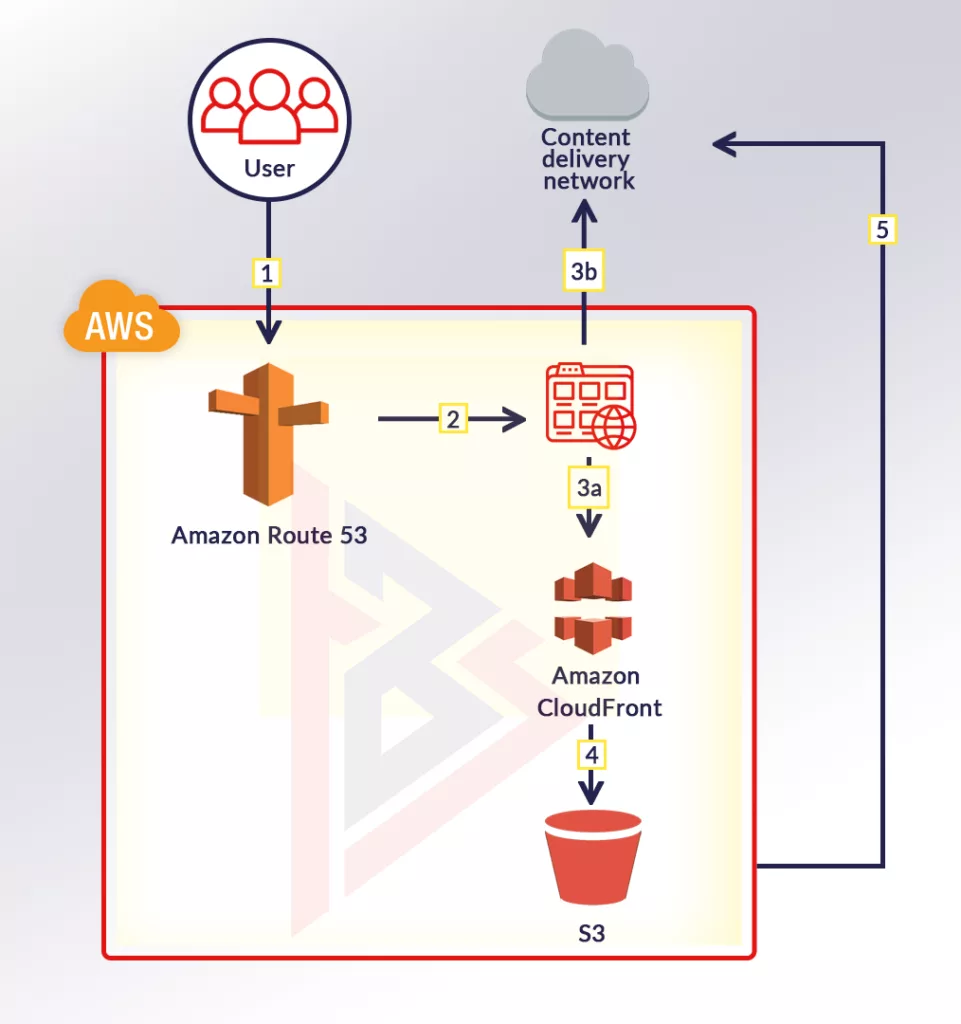
9. AWS Lambda:
You can run services without having to provision or manage servers by using AWS Lambda. For EC2 instances that are running 24/7, you pay for the entire period in which these servers are running.
The Lambda platform lets you run applications only when necessary by providing demand-based computing. With Lambda, all that is, needed to run your application and scale with high availability is to upload your code.
Benefits of using Lambda:
- You don’t have to manage servers
- Scaling continuously
- Metering in sub-seconds
- The ability to perform consistently
Within our organization, lambda is, used for use cases such as generating payment receipts, invoices, data reconciliation, fallback mechanisms, and analytics.
The Lambda function can be, invoked based on triggers such as changes in data, changes in the state of the system, files uploaded to S3, and user actions.
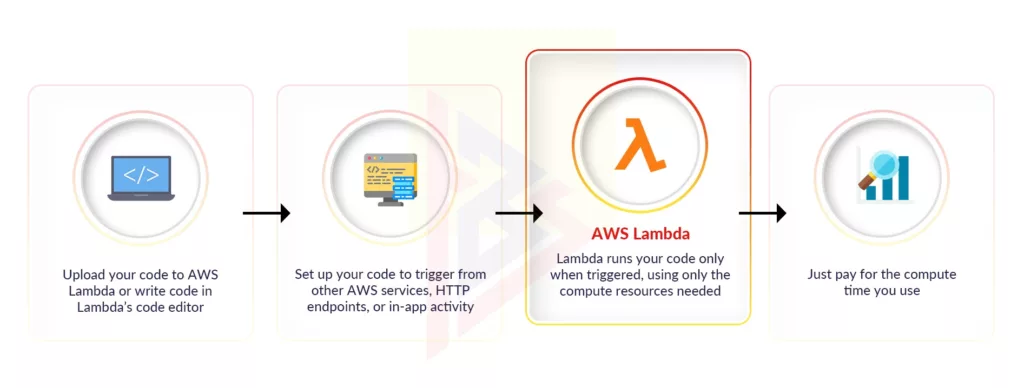
10. Amazon Virtual Private Cloud (VPC):
AWS VPC is a component within AWS that works with multiple other components to provide an application-specific, logically isolated cloud environment that allows the launch of resources within an isolated network.
With security groups, subnets, routing tables, etc., you can completely control your virtual networking environment. Create, for example, a load balancer that is public-facing and has public subnets. Access to these applications can be, found on the Internet. Similar to private subnets, a private subnet can be, used to create private services, databases, caches, etc. that are only accessible within the VPC.
Frequently, you need access to resources in one VPC from another VPC in the real world. VPC Peerings are, required in these cases to allow access.
I highly recommend you read the below concepts to more fully understand VPCs, as I mentioned earlier there are tons within VPCs:
- Security Groups
- Subnets
- Routing Tables
- VPC Peering
- IAM
- Internet Gateways
- NAT Gateways
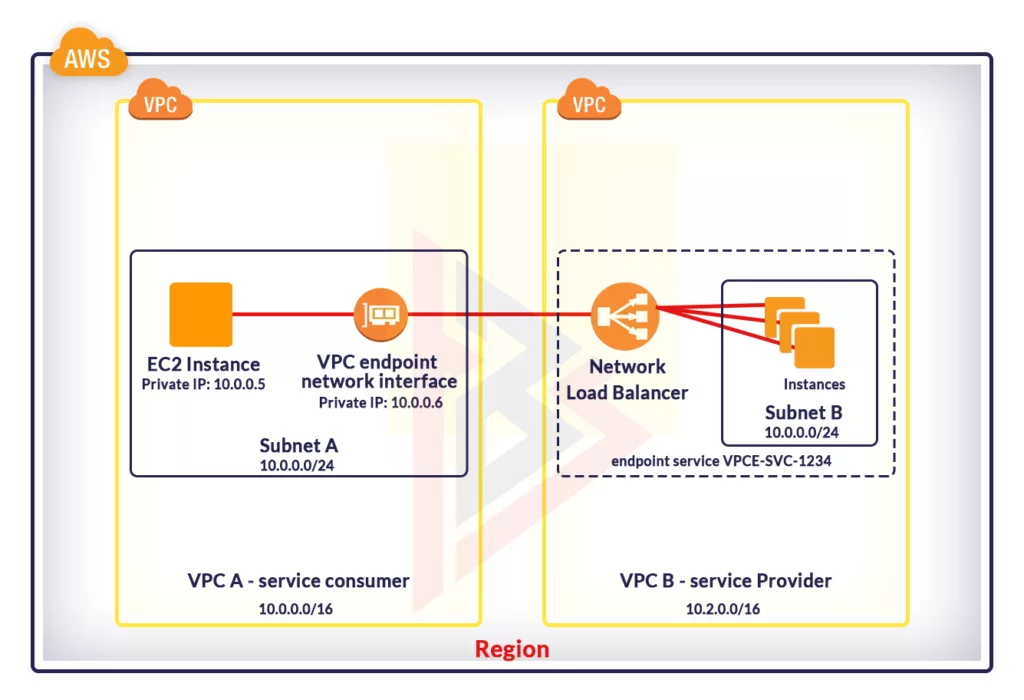
Final Words
There are several companies that provide cloud services, among them Amazon. In order to find another innovative way for developers and entrepreneurs, it keeps experimenting with a wide variety of services.
They use new ideas and functions to replace old active items. This can help developers easily build their applications.
Ready to Get Started with Amazon Web Services?
Take advantage of our enterprise-grade, custom-made & professional AWS development. Amazon Web Services automates simple tasks, such as changing or monitoring configurations, patching, improving security, and performing backups. With our services, we can provide the full lifecycle of establishing, managing, and supporting IT infrastructure.
We have the right people with the right skills and can help you develop your business. We employ professionals with expertise in modern technology to address critical client needs across a variety of industries. Do you have any questions about Amazon Web Services? Contact us here or feel free to drop your query in the comments section below.
